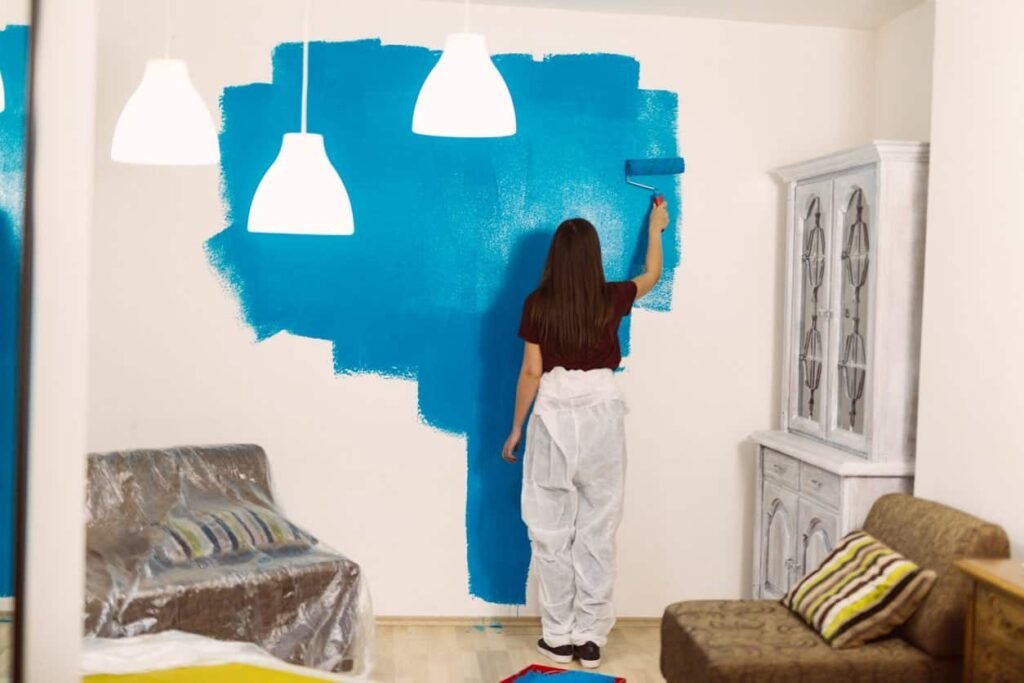In today’s world, where sustainability is at the forefront of home improvement practices, paint calculators have emerged as an invaluable tool for homeowners, contractors, and DIY enthusiasts alike. These digital tools not only streamline the painting process but also significantly contribute to eco-friendly practices. This article delves into the role of paint calculators in sustainable home improvement, highlighting their benefits, features, and how they promote a greener approach to painting projects.
Understanding Paint Calculators
Paint calculators are digital tools designed to estimate the amount of paint needed for a specific project. By inputting the dimensions of the area to be painted, these calculators provide an accurate estimate, helping users purchase the right quantity of paint. This not only saves time and money but also reduces waste—a key factor in sustainable home improvement.
Key Features of Paint Calculators
Accuracy in Measurements: One of the primary functions of paint calculators is to ensure accuracy in measurements. By entering precise dimensions of walls, ceilings, and other surfaces, users can receive a tailored estimate of paint required. This accuracy is crucial for reducing excess paint, which often ends up being discarded.
Calculation of Paint Coverage: Different types of paint have varying coverage rates. A paint calculator can factor in the specific type of paint being used, allowing users to understand how much surface area a single gallon will cover. This knowledge helps in purchasing the appropriate amount of paint, minimizing waste and promoting sustainability.
Consideration of Surface Texture: The texture of a surface can significantly impact paint absorption. Paint calculators can account for factors such as smooth, textured, or porous surfaces, ensuring a more precise estimate. This consideration leads to better project planning and less leftover paint.
Color and Finish Options: Many advanced paint calculators allow users to select specific colors and finishes. Different colors and finishes can affect how much paint is needed, and by including these details, the calculator provides an even more accurate estimate.
The Environmental Impact of Paint Waste
Paint waste is a significant environmental concern. According to the Environmental Protection Agency (EPA), paint is one of the most common household hazardous wastes. Improper disposal of leftover paint can lead to soil and water contamination. Moreover, the production of paint itself often involves the use of harmful chemicals and resources. By using paint calculators, homeowners can make more informed decisions that contribute to minimizing these environmental impacts.
Benefits of Using Paint Calculators for Sustainable Home Improvement
Reduction of Excess Paint: One of the most significant benefits of using paint calculators is the reduction of excess paint. Accurate estimates ensure that homeowners buy only what they need, significantly cutting down on leftover paint that could otherwise contribute to waste.
Cost Savings: While focusing on sustainability, it’s important not to overlook the financial aspect. Purchasing the right amount of paint not only reduces waste but also saves money. Homeowners can allocate their budgets more efficiently, investing in quality materials and finishes that enhance sustainability.
Encouraging Responsible Purchasing: By providing an accurate estimate of paint requirements, paint calculators encourage homeowners to purchase only the necessary amount of paint. This responsible purchasing behavior is vital for reducing overall environmental impact and promoting a culture of sustainability in home improvement projects.
Promoting Eco-Friendly Paint Choices: Many paint calculators now offer options to filter by eco-friendly or low-VOC (volatile organic compounds) paints. This feature allows users to make informed decisions about the types of paint they use, further promoting a sustainable approach to home improvement.
Support for DIY Projects: Paint calculators empower DIY enthusiasts to take on home improvement projects confidently. By providing accurate estimates, they help homeowners tackle projects without the fear of running out of paint or over-purchasing, making it easier to engage in sustainable practices.
Integrating Paint Calculators into Your Home Improvement Projects
Steps to Effectively Use a Paint Calculator
Measure Your Space: Before using a paint calculator, accurately measure the length and height of the walls or surfaces you plan to paint. Be sure to account for doors, windows, and other fixtures that will not require paint.
Select Your Paint Type: Choose the type of paint you intend to use, considering factors such as finish, color, and environmental impact. Low-VOC and eco-friendly paints are excellent choices for sustainable home improvement.
Input Your Data: Enter the measurements and paint details into the calculator. Review the output to ensure it meets your project needs.
Purchase Wisely: Use the calculator’s estimate to guide your purchase, ensuring that you buy only what you need.
Dispose of Leftovers Responsibly: If there’s any leftover paint, explore recycling options in your community to ensure it’s disposed of in an environmentally friendly manner.
Conclusion
As the push for sustainable living continues to grow, tools like paint calculators play a crucial role in promoting eco-friendly practices in home improvement. By helping users accurately estimate their paint needs, these calculators not only reduce waste but also support responsible purchasing decisions. In an era where every small action counts towards a larger environmental impact, incorporating paint calculators into home improvement projects is a step toward a greener future.
Whether you’re a homeowner looking to refresh your space or a contractor managing a large project, utilizing a paint calculator can streamline your efforts while contributing to a more sustainable world. Embrace this innovative tool and take your sustainable home improvement projects to the next level!

Paint Calculators
Posted inBusiness

